- Home
- Marion Meade
The Last Days of Dorothy Parker
The Last Days of Dorothy Parker Read online
CONTENTS
About the Author
About the Book
Title Page
Copyright Page
Author’s Note
•
THE LAST DAYS OF DOROTHY PARKER
Prologue:
The Big Crack-Up
Chapter 1:
Times Square (1931–1933)
Chapter 2:
Beverly Hills (1934–1935)
Chapter 3:
Foreign Lands (1936–1950)
Chapter 4:
Norma Place (1951–1963)
Chapter 5:
Upper East Side (1964–1967)
Chapter 6:
Ferncliff (1967)
Chapter 7:
Wall Street (1968–1976)
Chapter 8:
Baltimore (1977–1988)
Epitaph:
Laughter and Hope and a Sock in the Eye
•
Appendix:
The Hunt for Dorothy Parker’s Worldly Goods
Source Notes
PENGUIN BOOKS
THE LAST DAYS OF DOROTHY PARKER
MARION MEADE is the author of Dorothy Parker: What Fresh Hell Is This? and Bobbed Hair and Bathtub Gin: Writers Running Wild in the Twenties. She has also written biographies of Nathanael West, Woody Allen, Buster Keaton, Eleanor of Aquitaine, Victoria Woodhull, and Madame Blavatsky, as well as two novels about medieval France. For Penguin Classics, Meade has edited The Portable Dorothy Parker and has introduced Parker’s Complete Poems, The Ladies of the Corridor, and Alpine Giggle Week.
ABOUT THE BOOK
The Volney was a dignified residence hotel, favored by older women and their dogs, on Manhattan’s Upper East Side. Dorothy Parker died there, of a heart attack, on June 7, 1967. She was seventy-three and had been famous for almost half a century. As befitted a much-loved humorist, poet, and storywriter, the New York Times announced her exit in a front-page obituary. This was followed by a star-studded memorial service, also reported in the paper, which was attended by some 150 of her friends and admirers. More than twenty years later, on October 20, 1988, Parker was buried in Baltimore, in a memorial garden at the national headquarters of the NAACP. Why did it take more than two decades for Dorothy Parker to get a decent burial? What accounts for her macabre Edgar Allan Poe–style ending, arguably one of the most ghoulish in modern literary history? And just what happened to her during those twenty-one years?
Dorothy Parker biographer Marion Meade draws from new research to portray Parker in her last years and last days, with an emphasis on her posthumous existence. The story also features Parker’s enduring friendship of over thirty years with playwright and screenwriter Lillian Hellman, along with other notable figures in Parker’s circle, including Dashiell Hammett and John O’Hara. Always riotous and occasionally ghastly, The Last Days is utterly and completely Dorothy Parker.
THE LAST DAYS OF
DOROTHY PARKER
•
The Extraordinary Lives of
Dorothy Parker and Lillian Hellman
and How Death Can Be Hell on Friendship
•
Marion Meade
A PENGUIN SPECIAL
PENGUIN BOOKS
Published by the Penguin Group
Penguin Group (USA) LLC
375 Hudson Street
New York, New York 10014
USA | Canada | UK | Ireland | Australia | New Zealand | India | South Africa | China
penguin.com
A Penguin Random House Company
First published in Penguin Books 2014
Copyright © 2014 by Marion Meade
Penguin supports copyright. Copyright fuels creativity, encourages diverse voices, promotes free speech, and creates a vibrant culture. Thank you for buying an authorized edition of this book and for complying with copyright laws by not reproducing, scanning, or distributing any part of it in any form without permission. You are supporting writers and allowing Penguin to continue to publish books for every reader.
ISBN 978-1-101-62721-1
Version_1
AUTHOR’S NOTE
It is rare in the literary world to find close friendships between writers – Hawthorne and Melville readily come to mind as well as James and Wharton – but an intimate thirty-year bond between two renowned women is extraordinary. What is noteworthy about the relationship of Dorothy Parker and Lillian Hellman is not just its length but also the surprising sequel, a preposterous comic operetta that began with Parker’s death in 1967.
When I was winding up a biography of Parker in the winter of 1987, I believed my subject had been buried two decades earlier at a cemetery in Westchester County, New York. By pure happenstance, I discovered this to be untrue. She was not interred at Ferncliff and furthermore was not a resident of any graveyard. In a peculiar twist of fate, the place to which she had found her way was truly creative, a shade chilling but no doubt the sort of gallows humor that she herself might have considered amusing.
Why did it take so many years for Parker to get a proper burial? What accounts for her Edgar Allan Poe–style ending, arguably one of the spookiest in modern literary history? What happened to her during those twenty-one years?
This story is not about Parker alone but Parker side by side with Hellman. It traces the life and death of two fiercely headstrong women, how their closeness endured over decades as each of them struggled to find their place in the world, how paths that had flowed comfortably parallel for years on end gradually diverged until only threadbare memories remained.
During the good times, an endless parade of particularly interesting people swept into – and out of – their lives: Dashiell Hammett and Alan Campbell, of course, but also larger-than-life characters such as Ernest Hemingway, John O’Hara, S. J. Perelman, Mary McCarthy, Samuel Goldwyn, Gloria Vanderbilt and Wyatt Cooper, Zero Mostel, Nora Ephron, William Styron, among others. Indeed, was there anyone in the fast lane they did not meet or know or admire, sleep or quarrel with? In the view of some, the friends eventually resembled an old married couple together so long that the prospect of change would be unlikely. But this notion, alas, turned out to be fanciful.
Afterward none of it seemed to matter because – fantastic but true – death can be hell on friendship.
Prologue
THE BIG CRACK-UP
Everyone was fox-trotting to “I’ve Got the World on a String” when F. Scott Fitzgerald composed a eulogy for the 1920s, a joyful ten-year period that was obviously “as dead as were the Yellow Nineties in 1902.”1 His essay, “Echoes of the Jazz Age,” was both a farewell and a confession of his own failure and despair. “Somebody had blundered and the most expensive orgy in history was over.”
As he published those words, in Scribner’s Magazine, it was November, 1931, and he was broke, cracked up, a Gatsby in pieces. The spree that had “bore him up, flattered him, and gave him more money than he had dreamed of” had dissipated into a blur of memory:
Good-bye to the whoopee flappers and their hip-flask Romeos.
Good-bye to speakeasies that served Bushmills Irish Whiskey in thick white mugs.
Good-bye to knees, round and rosy, that had disappeared, again, as skirts dropped.
Good-bye to the Oak Park boy, at La Closerie des Lilas in Paris, using lead pencils to write clean sentences in blue notebooks.
Good-bye to the Black Bottom and “Basin Street Blues.”
Once the music died, bankers and brokers jumped from buildings in Times Square, and the homeless lined up
below for bowls of lukewarm soup with a hunk of bread. The rest of the country was waiting for the cure. It was simply a matter of time before the market went up – wait until spring, folks insisted, wait and see – and then everything would be normal somehow.
But would it? The big money was gone, the expatriates limped home, hemlines plunged, even the end of Prohibition rolled into sight. About the only thing that had not changed were people trying to get as inebriated as possible, a condition that Fitzgerald in particular knew all too well.
That same month his epitaph for the Jazz Age appeared, two women showed up one evening at a cocktail party in Greenwich Village. One was an inch short of five feet, neatly made, and a somebody; the other stood half a head taller, shapely, and nobody of importance. Publishing parties that fall of 1931 were crowded with perfectly nice people in the midst of noisy breakdowns, spilling drinks, stubbing out butts in empty glasses, and laughing too heartily. And so when one of the women noticed a writer of the most incredible detective novels, when she turned to him and abruptly dropped to her knees and grabbed the man’s hand – actually, she kissed it – this set off whoops of laughter.
Standing nearby, the writer’s girlfriend had turned away. That night after the party, she began yelling at him that he made her feel sick. How could she live with a man who just stood and simpered when a famous woman kissed his hand in public? He had loved it, she remembered saying, admit it.
Don’t be crazy, he said. He’d hated it.
She was through with him, she cried.
Go ahead, he told her. Leave.
This particular evening remained stuck in her memory. It wasn’t the “wacky-tipsy fight”2 because Lillian Hellman and Dashiell Hammett were always getting drunk and fighting about one thing or another. It was the hand-kisser, who would become her lifelong friend, against all the odds.
Chapter 1
Times Square
(1931–1933)
There were times when she got tired of everything but if you talked like that, people usually wanted to know what was wrong. Didn’t she feel well? So she once put it into verse – “This living, this living, this living / Was never a project of mine” – and handed the poem to her friend Frank Adams at the World, who published it in his column.3 Later, “Coda” would be collected in a volume of verse and made readers smile, she was told, so she supposed it was decent. Poetry hadn’t changed the feelings, though, except that she was better at pretending now.
For many years Dorothy Parker had lived in a Midtown Manhattan hotel, home of the legendary Algonquin Round Table, going out each night to shows or clubs or cocktail parties, ending up at her favorite speakeasy, Tony Soma’s, where she held court in a cloud of cigarette smoke and downed copious amounts of Scotch, toddling home bleary-eyed in the predawn hours and waking up with historic hangovers that belonged, she said, in the goddamn Smithsonian under glass.
By this time the Round Table where she had gathered with her great friends Alexander Woollcott and Robert Benchley was gone, their ten-year lunch fading into myth and memory. But to the general public, she continued to be America’s sweetheart, a poet and short-story writer with a finely tuned ear and a cheeky wit, loved for indelicate confessional verses, for tortuous romances and cynical wisecracks. Because she was one-of-a-kind, fan mail addressed to “Mrs. Dorothy Parker, New York City” could be sure of delivery. Who, besides the post office, did not know that she published in the New Yorker, just as she lived at the Algonquin Hotel in Times Square? Or that her love life was in chaos as usual, her beaux being legion in quantity, low in quality, as she continued to wait for Prince Charming.
Rather surprisingly, only a portion of her work demonstrated the signature humor for which she had become famous, but instead many verses showed how she had shaped her obsession with loss and death into deceptively plain commentary. “Observation,” published in Enough Rope, 1926, was a love poem to freedom that disregarded the boundary between recklessness and self-destruction:
If I don’t drive around the park,
I’m pretty sure to make my mark.
If I’m in bed each night by ten,
I may get back my looks again.
If I abstain from fun and such,
I’ll probably amount to much;
But I shall stay the way I am,
Because I do not give a damn.4
Of course she didn’t. Because she was being Dorothy Parker. At the age of 39, it was she (and Edna St. Vincent Millay) who personified the postwar woman: smart, glamorous, and sexually liberated, one of those tough cookies who did as she pleased. “And if you do not like me so, / To hell, my love, with you!” she wrote.5 This militant ode to female independence had become one of her best loved verses.
Since she wrote autobiographically, readers liked to think they knew her.
They didn’t, because she was good at using confession to hide some parts of her life and humor to camouflage the rest. She once described herself as “just a little Jewish girl trying to be cute.”6 She was adorable without trying, though, a pocket-size girl never growing any taller than four feet eleven, with a skinny body and dainty feet, dreamy dark eyes and a cotton-candy voice, seldom silent. Everything about her was sugared except a demonic tongue that willfully provoked the nuns at her convent school – she insisted that the Immaculate Conception was spontaneous combustion – and a great many people thereafter.
Late one night the bartender at Tony’s asked what she was having.
“Not much fun,” she told him.7 She wished to God that she could quit writing light verse, but how? She was too famous. What would Susan B. Anthony do? What would Attila the Hun do?
Two years into the Depression the country had fallen on hard times. Yet Dottie’s difficulties had little to do with the wider world and its crazy pileups of lost jobs, bank closures, and breadlines. Most of her worries were personal – overdue rent, deadlines, memorable hangovers, missed periods, not necessarily in that order – and she would remember 1932 quite clearly as “this year of hell” when life was a ghastly mess.8 Tragedies don’t kill you, she decided, “it’s the messes. I can’t stand messes. I’m not being a smart-cracker. You know I’m not when you meet me – don’t you, honey?”9
•
Not giving a damn meant sleeping with youngsters sometimes. John McClain was a good-looking, muscular fellow of the sort that stands out in a crowd, a reporter for the New York Sun who had been a football star at Brown. Dottie met him through one of her regular drinking companions, a writer she knew by the name of John O’Hara. Having taken a liking to young O’Hara, deciding he was a straight shooter (he wasn’t always), she figured that his friend must be similarly trustworthy. The main problem with this John McClain was his age: twenty-seven.10
For a while, everything was marvelous. John was bright, sweet, and treated her with reverence, obviously flattered to be seen with a successful writer, an eager escort on her regular nocturnal rambles. But gradually, even while swearing his love, he turned snippy and complained that she wanted too much. There were times when he disappeared, for no good reason, when she feared he was bored with her and seeing other women. Well-intended friends warned that lover boy was on the make and plainly using her to meet rich women. Dottie refused to listen. She believed that John was not a bad person, simply immature and starstruck by the literary crowd.
Finally, she had to stop defending the rascal. One weekend he hurried off to Long Island and the home of a rich socialite, as if to remind Dottie that he was a bachelor and could spend time with anybody he pleased. Pretending, she tried to make light of the rival. How could she compete? Let’s face it, she didn’t own a squash court. Not even a swimming pool. He would return “as soon as he licked all the gilt off her ass,” she laughed.11
Before the relationship collapsed, there were awful screaming matches. Just so everybody would know, she called him, publicly, a male whore because it was a
fact. He, ungentlemanly, called her a rotten lay, which was an absolute lie.
In a perfect world, those who claim to love you do not go away without warning, forever. The sudden death of her mother, Eliza Marston Rothschild, the year Dottie was just five had left her permanently marked. Dark valleys of depression, she discovered, could be transformed into jokes, verses, stories. The grown Dottie found out about alcohol and learned how to anesthetize herself with industrial-strength Scotch. (She loved gin, brandy, and champagne, but loved Scotch more.) Although nobody called her an alcoholic to her face – she would have denied it – she was to some degree on her way to becoming one. With a couple of drinks under her belt, life seemed nicer; with a lot of drinks there seemed no need to think at all.
At the end of February 1932, sunk into a deep depression, she finally reached rock bottom. In a scribbled note, she gave her clothing, watch, and dachshund Robinson to her sister, Helen, and to cheating John McClain, who cared nothing for her, she left her book royalties. A heap of misery, she swallowed barbiturates and pulled the covers over her head at the Algonquin.
Not enough pills, it turned out, because the next day she found herself in Presbyterian Hospital getting her stomach pumped. It was to be her final effort to shoo herself out of this life, after previous ineffectual attempts with razor blades, pills, and shoe polish. She had never been able to get the hang of a foolproof suicide technique. In “Resume,” she wrote: “You might as well live,” which was to say the matter involved complicated decisions.12
After the parting from John McClain, which had turned out so badly, she steered clear of emotional involvements and concentrated on work. Between 1932 and 1933, she produced some of her sharpest stories, including “From the Diary of a New York Lady,” “Glory in the Daytime,” “Horsie,” and “Here We Are.” There were glimpses of the past in “Dusk Before Fireworks,” in which a controlling woman struggles to salvage her affair with a handsome scoundrel, where the made-up characters closely mirror the real-life ones. But mainly she tried not to look back.

 Eleanor of Aquitaine
Eleanor of Aquitaine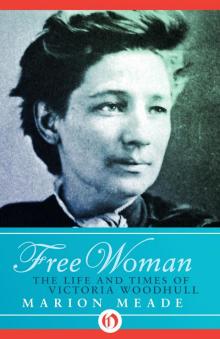 Free Woman
Free Woman Unruly Life of Woody Allen
Unruly Life of Woody Allen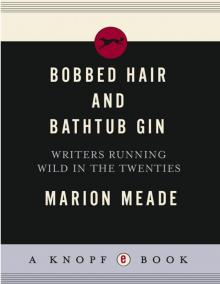 Bobbed Hair and Bathtub Gin
Bobbed Hair and Bathtub Gin Madame Blavatsky
Madame Blavatsky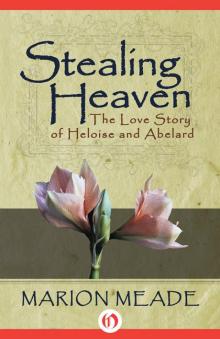 Stealing Heaven
Stealing Heaven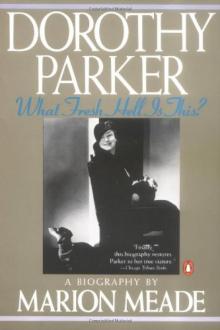 Dorothy Parker: What Fresh Hell Is This?
Dorothy Parker: What Fresh Hell Is This?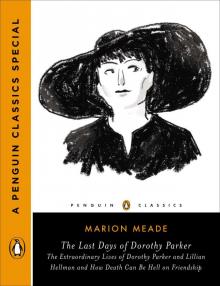 The Last Days of Dorothy Parker
The Last Days of Dorothy Parker